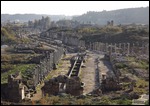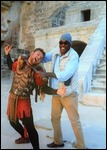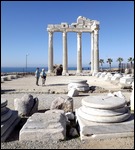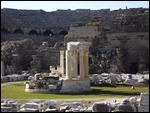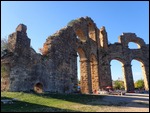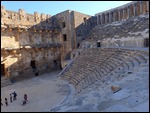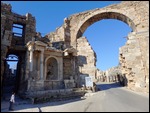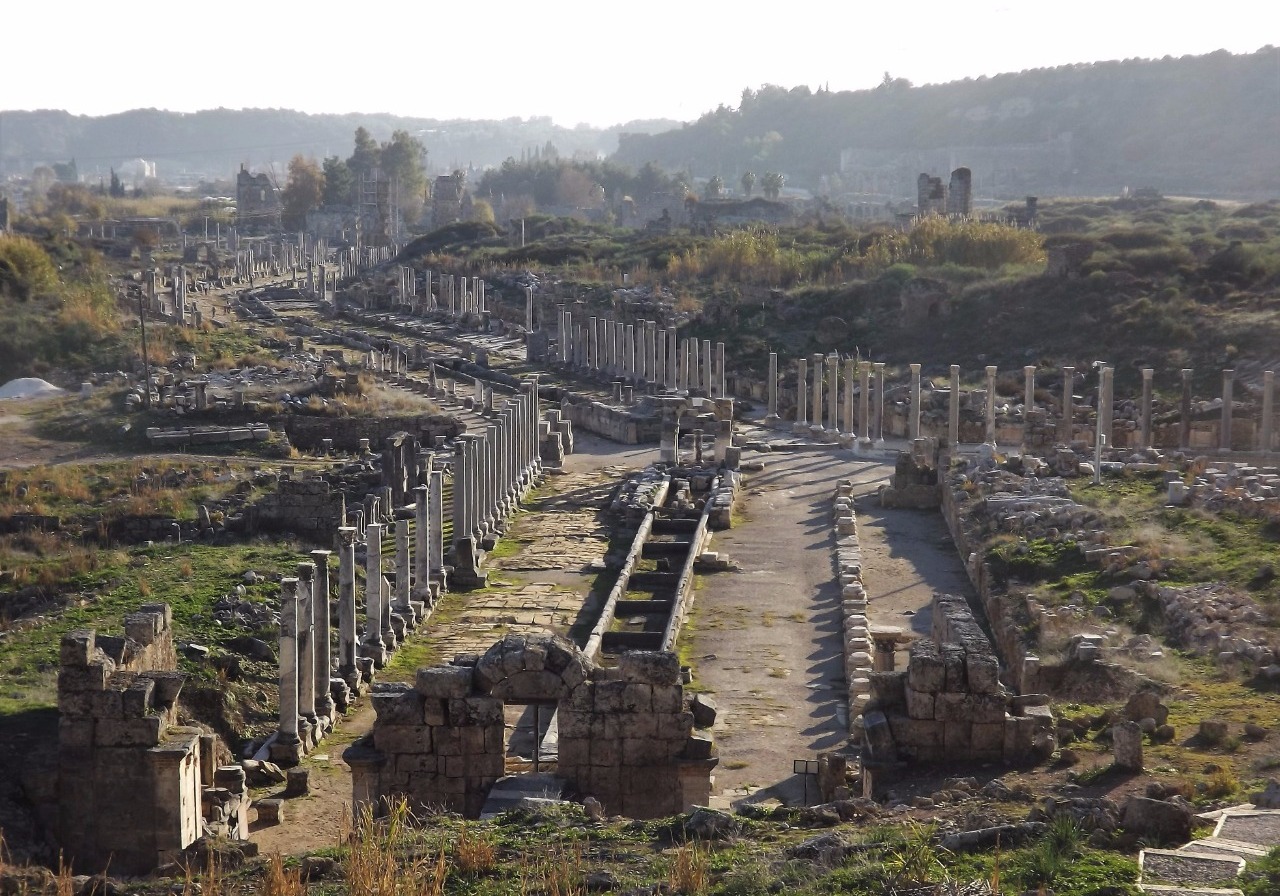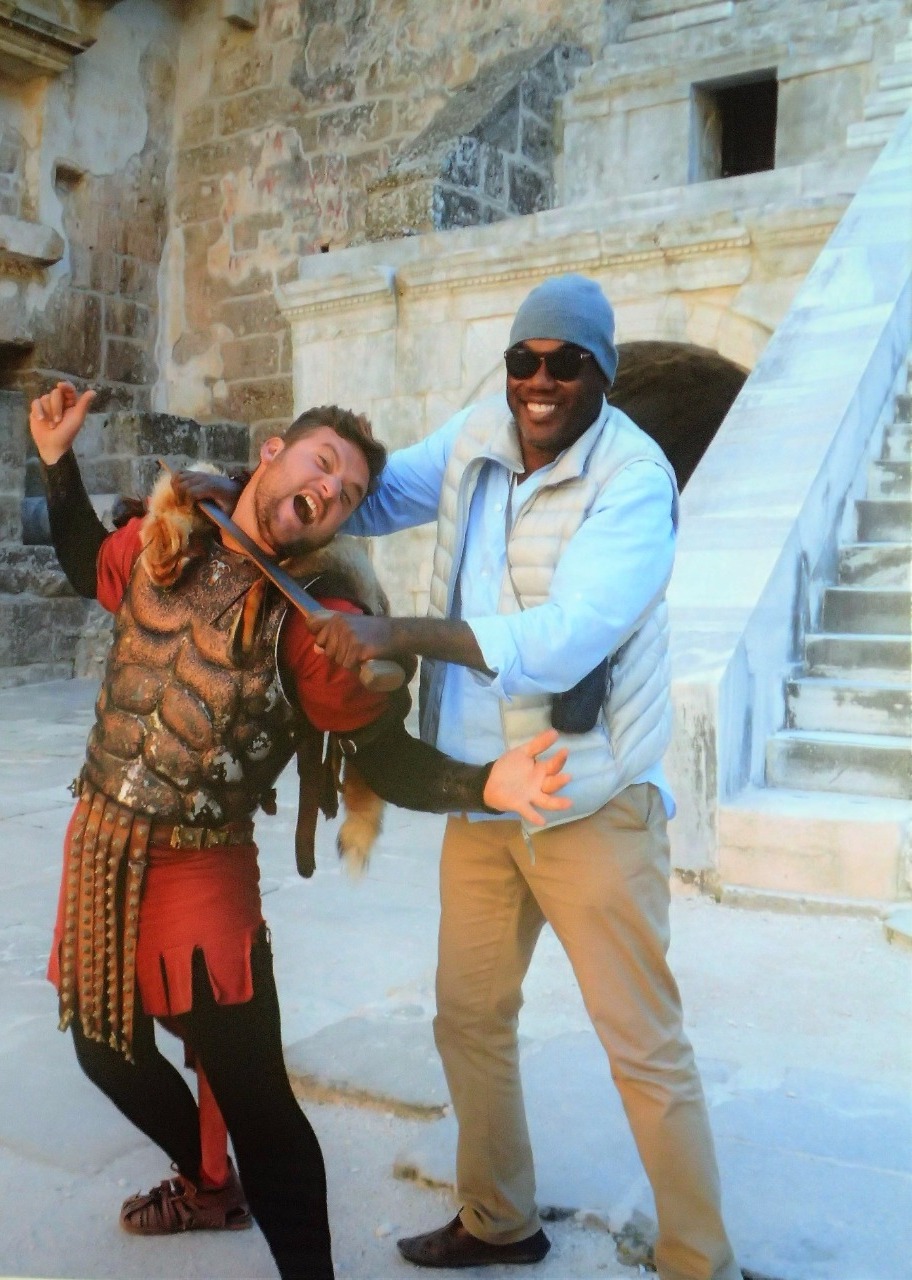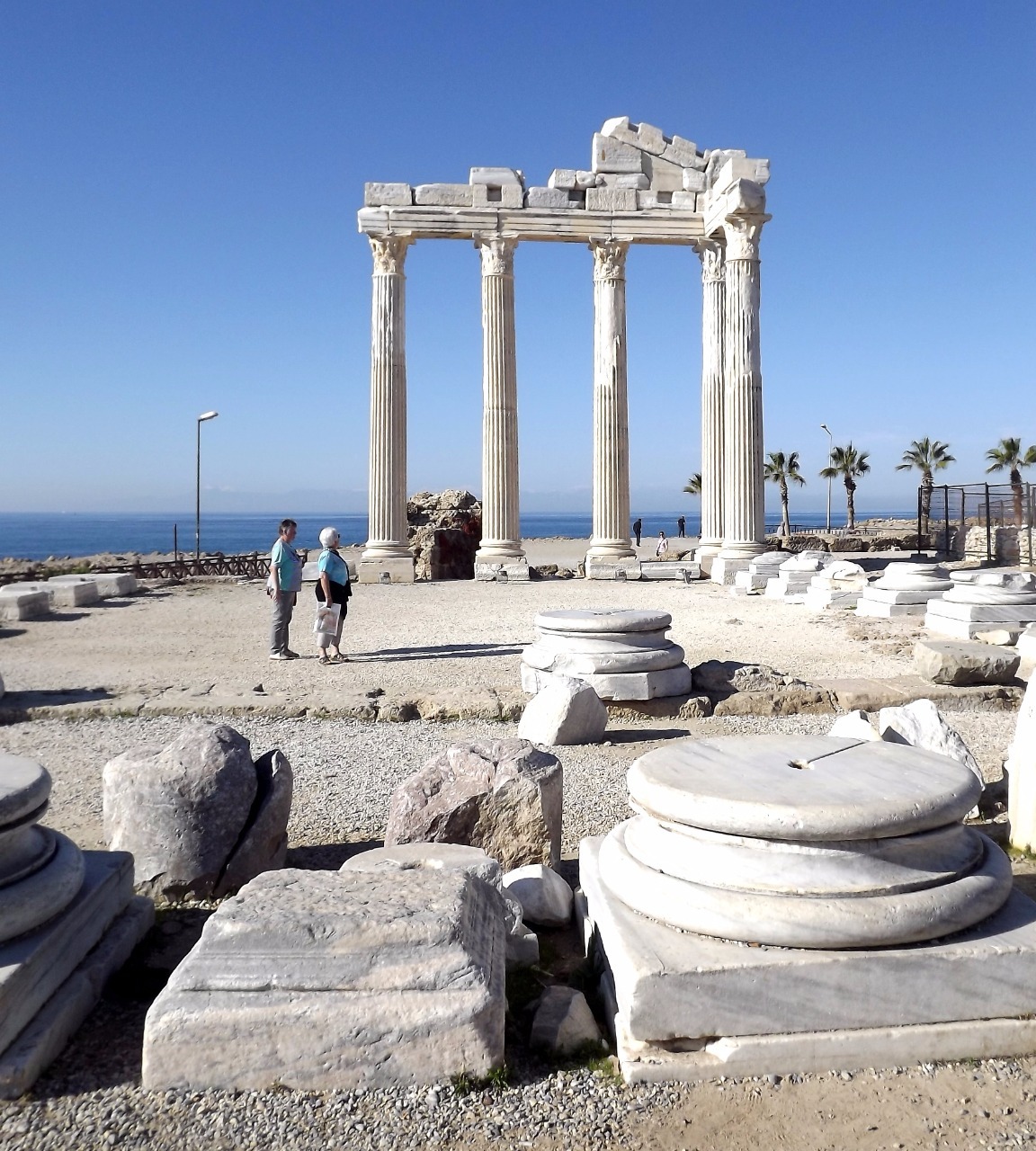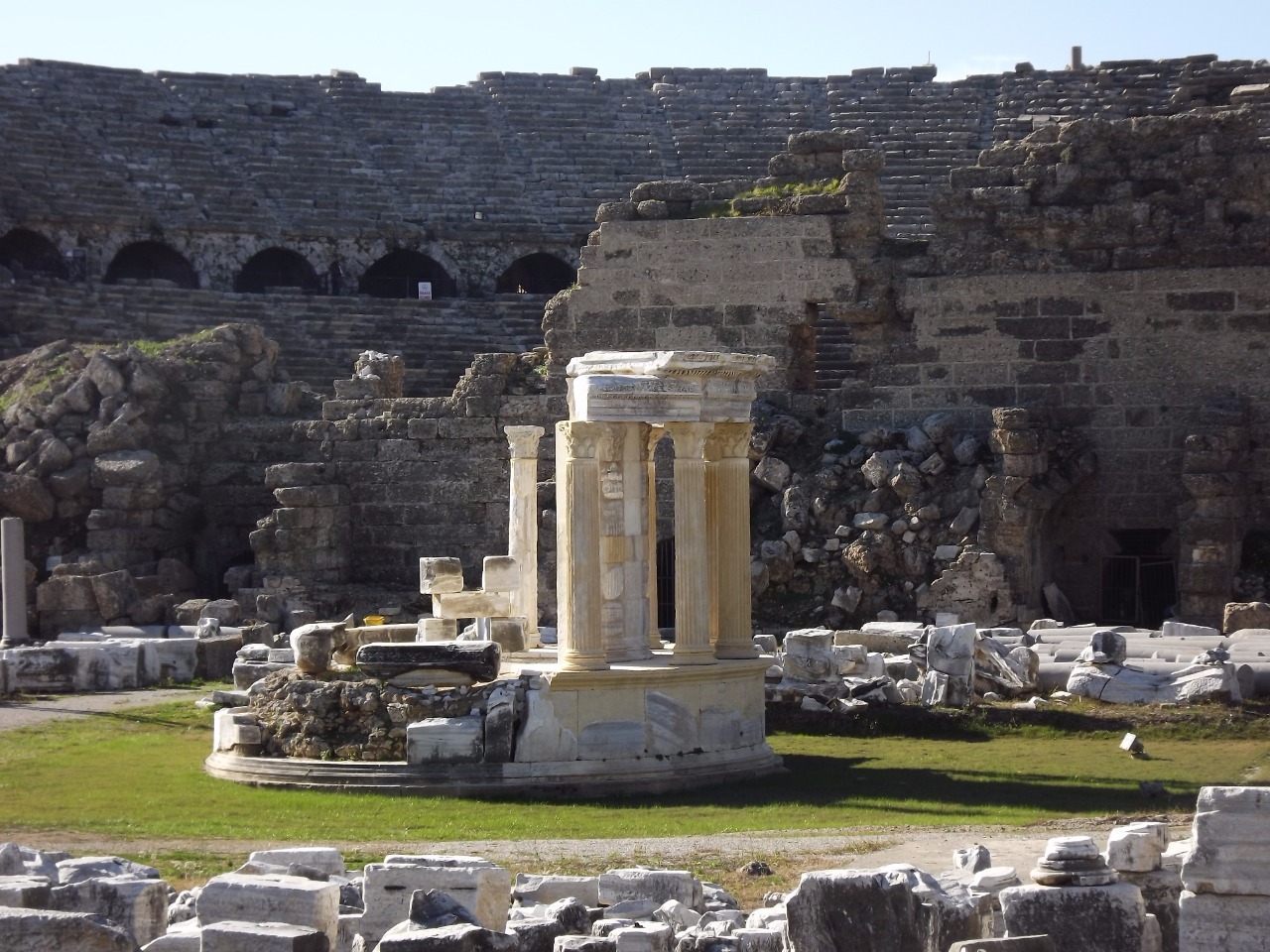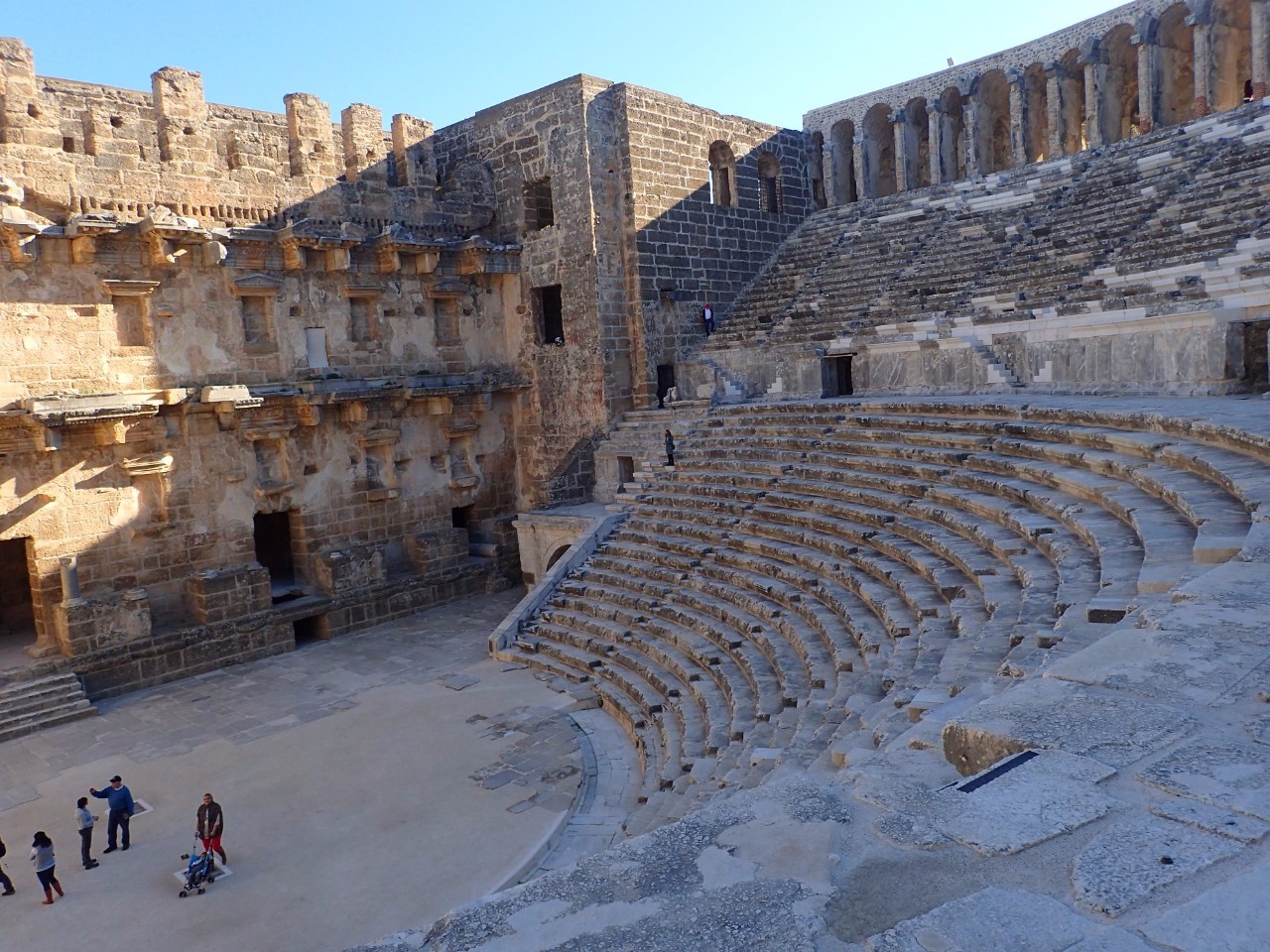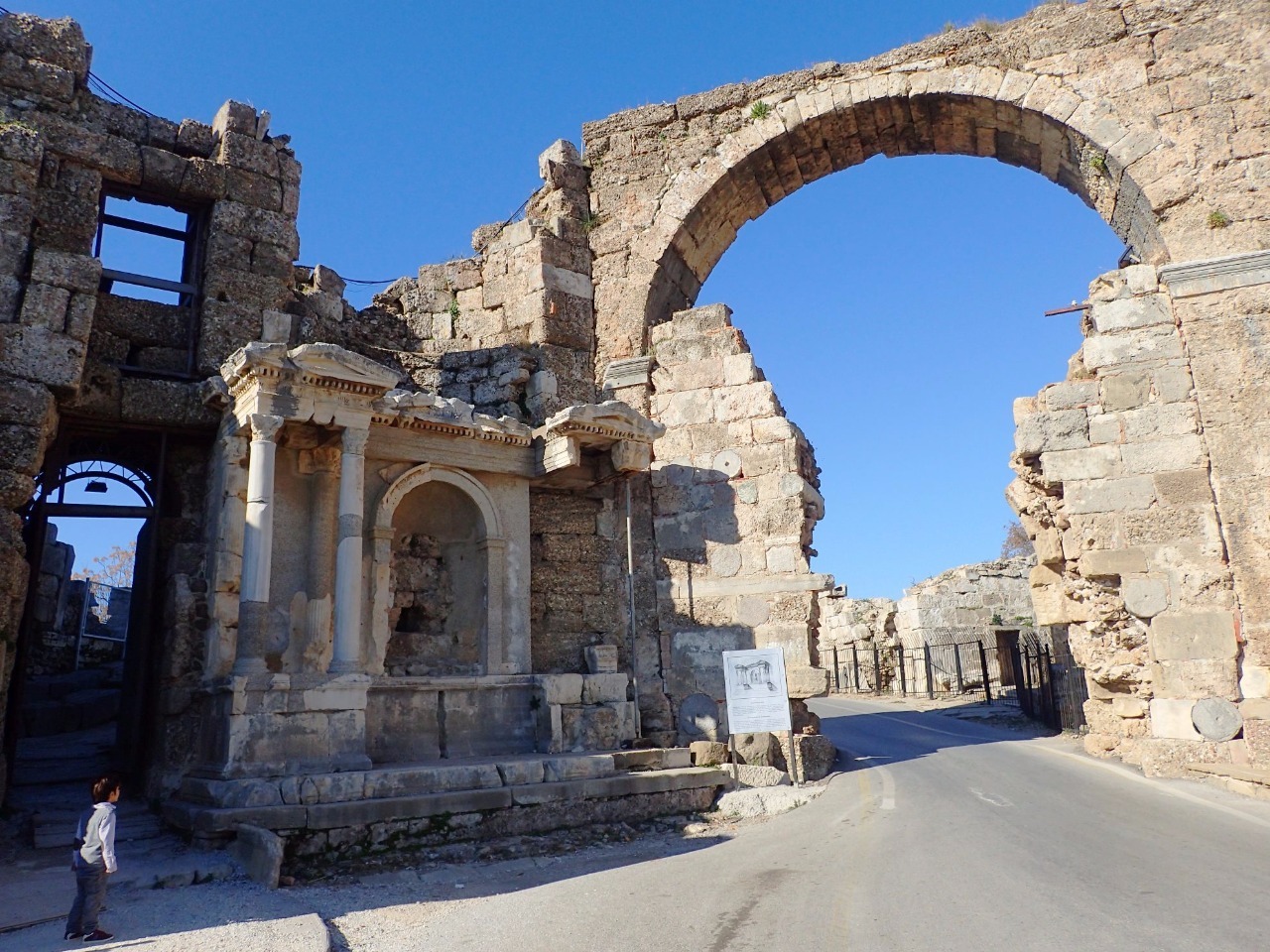To see the rest of our photos, visit my Flickr album here.
This day we took a tour to four destinations: Perge - the principal Roman city of Pamphylia, Aspendos - Roman city with the best preserved theater, Side - a major Roman port town on the Mediterranean, and Kursunlu Waterfall. Apostle Paul visited both Perge (Biblical Perga) and Side on his trips through Anatolia to spread Christianity. Although our Turkish tour guide Ramazan was less satisfying, the day turned out to be a very colorful experience thanks to the cosmopolitan make-up of our tour group - besides us, a young couple from China and a obviously well-to-do family of four from Kuwait - the man was Iranian and woman was Lebanese Arab. Having to visit three Roman cities in one day, it was unfortunately necessary to miss many worthy sights.
This site of Perge contained the best preserved Roman shopping streets and Roman baths, however both the semicircular theater and the elongated stadium for horse racing were not open to the public. The Roman streets had a covered drainage ditch in the middle and arcaded shopping galleries on either side supported by hundreds of granite or marble columns. A fountain was at the crossroads of two streets; we climbed the small hill above the fountain to the very top, and the Chinese couple followed us. Here in an evocative setting overlooking the coastal plain of ancient Pamphylia, an American Christian group was conducting a Bible study session. Descending the hill, we saw an elegant Roman bath with a large intact pool enclosure. Our tour guide was annoyed because we spent half an hour more than our allotted time. Jokingly, our driver - a younger blond Turk - commented that without ladies in the company, guys like us could not be restricted.
At Aspendos, we first made a stop at the ruins of the city's gigantic aqueducts. These were not gravity fed but rather used pressure to move water uphill through airtight stone pipes - quite a sophisticated technology. The huge ruined aqueduct structures with two levels of arches were very impressive. At the farm stands here our guide Ramazan bought and peeled oranges for his guests; he was very proud of Antalya's produce - tomatoes and oranges grown in hot houses for export. At the next stop we entered the restored Greek theater of Aspendos, with capacity of 15,000. The theater had been restored and now used for concerts; however the marble columns on the stage were missing, only the carved pediments stick out of the wall. Climbing up and walking around the entire semicircle of the theater, we were awed by the perfect geometry of the space, and the vertiginous view of the stage area far below. Distant hills could also be seen above the rims of the theater. As we were about to exit the theater, a blond muscular man dressed as a Roman gladiator accosted us to pose for photos. Both Neil and I posed as if we were fighting him, taking his sword and cutting him with it. At the photography stand outside the theater we purchased a good shot for each of us fighting the gladiator.
Side (pronounced see-duh) - a Greco-Roman city on the Mediterranean shore fronting several beaches - had the most enviable setting. The area had been recently developed as a tourist town with plenty of hotels, restaurants, bars, and souvenir shops, all among the extensive and spectacular ruins. A giant Greek theater with capacity of 20,000, an almost intact marble Greek temple, ancient shopping streets, ancient library, elegant ancient fountain, all of which we more or less missed due to our tour guide's poor planning. Still, we got a few good shots of the pretty small harbor, and the partially restored beautiful marble columns at the Temple of Apollo commanding a superb seaside location.
Our tour guide Ramazan was a 70 year-old retired teacher, a smug and somewhat arrogant Turk who boasted that his son was a surgeon in the Turkish capital Ankara, and his grandchildren attended private schools. He said his grandchildren wanted his son to move back to Antalya because in Ankara there was no sea. This was a typically Mediterranean perspective like the Italians - love of home town, and love of good life. Our fellow tourists from Kuwait with two adorable boys were very Americanized, spoke perfect English, and knew many Americans through work. A clash between two different Islamic perspectives made for interesting conversations. Ramazan criticized that in Iran women must cover their faces, the Kuwaiti couple replied that it was more propaganda than reality in Iran. However, the Iranian man in the couple had only been to Iran twice in his life; he does not even teach Persian to his children, only English and Arabic. At Side Ramazan decided to rest at a tea house with views of the Mediterranean coastline. A young waiter here started chatting with the Kuwaitis in Arabic, and said that he was from Syria. They discussed over a cup of tea for quite a while, so we and the Chinese couple went away to explore the shoreline.
Our last sight of the day was the Kursunlu waterfall, when the sun was setting. There were several such waterfalls in the vicinity of Antalya, formed by the predominantly limestone terrain. The waterfall had a pretty high drop, but could be much more interesting earlier in the day, or during the summer months.
